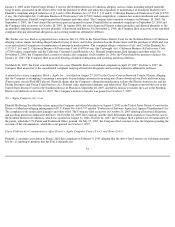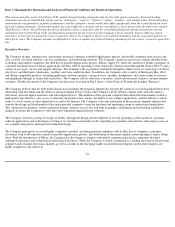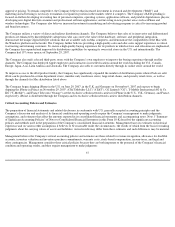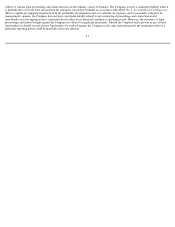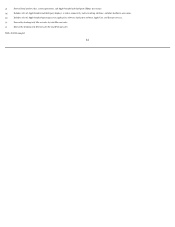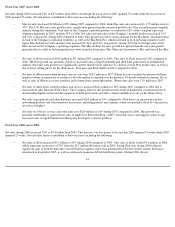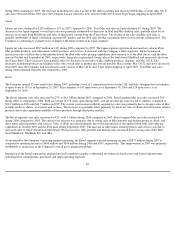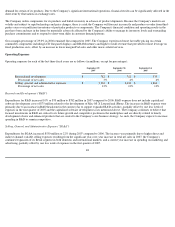Apple 2007 Annual Report Download - page 43
Download and view the complete annual report
Please find page 43 of the 2007 Apple annual report below. You can navigate through the pages in the report by either clicking on the pages listed below, or by using the keyword search tool below to find specific information within the annual report.
Warranty Costs
The Company provides for the estimated cost for hardware and software warranties at the time the related revenue is recognized based on
historical and projected warranty claim rates, historical and projected cost-per-claim, and knowledge of specific product failures that are outside
of the Company's typical experience. Each quarter, the Company reevaluates its estimates to assess the adequacy of its recorded warranty
liabilities considering the size of the installed base of products subject to warranty protection and adjusts the amounts as necessary. For products
accounted for under subscription accounting pursuant to SOP No. 97-2, the Company recognizes warranty expense as incurred. If actual product
failure rates or repair costs differ from estimates, revisions to the estimated warranty liability would be required and could negatively affect the
Company's results of operations.
The Company periodically provides updates to its applications and system software to maintain the software's compliance with specifications.
The estimated cost to develop such updates is accounted for as warranty cost that is recognized at the time related software revenue is
recognized. Factors considered in determining appropriate accruals related to such updates include the number of units delivered, the number of
updates expected to occur, and the historical cost and estimated future cost of the resources necessary to develop these updates.
Stock-Based Compensation
The Company accounts for stock-based compensation in accordance with Statement of Financial Accounting Standards ("SFAS") No. 123
(revised 2004) ("SFAS No. 123R"), Share-Based Payment . Under the provisions of SFAS No. 123R, stock-based compensation cost is
estimated at the grant date based on the award's fair-value as calculated by the Black-Scholes-Merton ("BSM") option-pricing model and is
recognized as expense ratably on a straight-
line basis over the requisite service period. The BSM model requires various judgmental assumptions
including expected volatility, forfeiture rates, and expected option life. If any of the assumptions used in the BSM model change significantly,
stock-based compensation expense may differ materially in the future from that recorded in the current period.
Income Taxes
The Company records a tax provision for the anticipated tax consequences of the reported results of operations. In accordance with SFAS
No. 109,
Accounting for Income Taxes , the provision for income taxes is computed using the asset and liability method, under which deferred
tax assets and liabilities are recognized for the expected future tax consequences of temporary differences between the financial reporting and tax
bases of assets and liabilities, and for operating losses and tax credit carryforwards. Deferred tax assets and liabilities are measured using the
currently enacted tax rates that apply to taxable income in effect for the years in which those tax assets are expected to be realized or settled. The
Company records a valuation allowance to reduce deferred tax assets to the amount that is believed more likely than not to be realized.
Management believes it is more likely than not that forecasted income, including income that may be generated as a result of certain tax planning
strategies, together with the tax effects of the deferred tax liabilities, will be sufficient to fully recover the remaining deferred tax assets. In the
event that all or part of the net deferred tax assets are determined not to be realizable in the future, an adjustment to the valuation allowance
would be charged to earnings in the period such determination is made. In addition, the calculation of tax liabilities involves significant judgment
in estimating the impact of uncertainties in the application of complex tax laws. Resolution of these uncertainties in a manner inconsistent with
management's expectations could have a material impact on the Company's financial condition and operating results.
Legal and Other Contingencies
As discussed in Part I, Item 3 of this Form 10-K under the heading "Legal Proceedings" and in Note 8 "Commitments and Contingencies" in
Notes to Consolidated Financial Statements, the Company is
40




